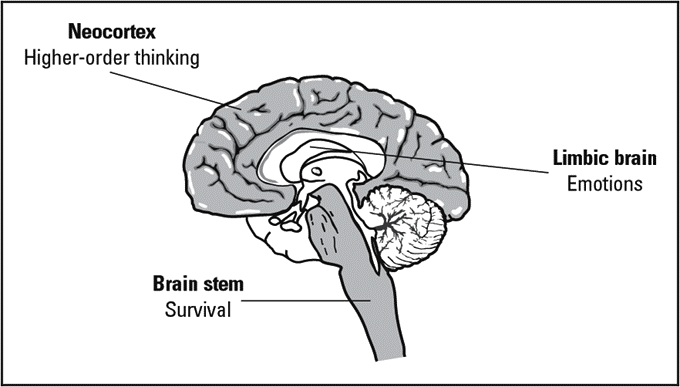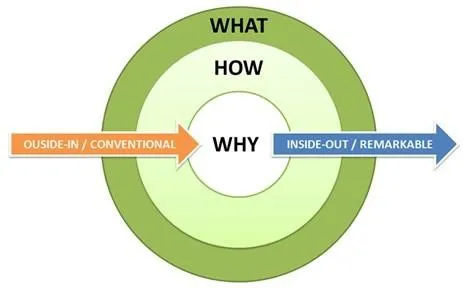Product psychology — how do people decide?
For product owners, managers, designers or anyone who wants to build great products…
What prompts users to buy from you, subscribe to your services, and engage with your business more often? What is this decision making cycle for the users like?
In this article, we will be exploring the process that takes place under the hood and how we as product owners can leverage it to make users choose our products and services.

Let’s take the buying decision use case. Users feel that they have evaluated all the options, pros, and cons and have then decided on buying the product. They feel that they have complete control on what they decide. But is it so?
The decision making process is not as simple as it seems!
What actually happens?
Our brain has three sections:

Three parts of the brain:
- Brain stem: This is the part that controls our motor reflexes and it is where our survival instincts come from. It is used for the body’s fight-or-flight response.
- Neocortex: This is the cerebral cortex’s newer part, helping humans deal with complex concepts. It is where all the analysis happens. Things like evaluating pros and cons and analysing options happen in the neocortex.
- Limbic system: Also called the emotional brain, it is 400 million years older than the neocortex. It’s here that our basic instincts like sex, fury, and fight thrive. It is visual, short-term oriented, concrete, and is NOT designed to deal with complex problems and ideas. It is the ‘gut feel’, the ‘instinct’ that we observe. Interestingly, this also happens to be the part responsible for making decisions.
Here is one situation: A salesman comes to your door and offers you a really good product. He lists all the features of the product one by one, until you are overwhelmed.
Let’s assume that the product he is selling is actually the best in the market. Would you buy it?
No, because something doesn’t feel right. So even though your neocortex analyses the features and evaluates it to be the best in the market, the limbic system, which is emotion-driven, doesn’t let you decide on the product.
The limbic system doesn’t understand language and is driven by the WHYs and the HOWs, while the neocortex is driven by the WHATs.
How can product owners use this information?
Simon Sinek in his research introduces a concept he calls ‘The Golden Circle’.

Most of us start with what we do, but the limbic system, which controls decisions, doesn’t understand language.
It understands the why and the how; the purpose, the cause, and the emotion behind what we do.
That does not mean the what is not important. Our brain needs to feel in control. It needs to justify the decision by the what. So even after the user has decided, the what makes him in control, and makes him feel that the decision he made was sensible and properly evaluated.
So, the next time you are communicating with your users, investors, and stakeholders, don’t tell them what’ first; tell them why and then move to how and what.
If your why resonates with users, they will definitely decide on your product and service.
Why is this ‘why’ important?
People don’t buy what you do, they buy why you do it. If you talk about what you believe, you will attract those who believe what you believe.
Law of diffusion of innovation:

Of all our population: 2.5 percent are innovators, 13.5 percent early adopters, 34 percent early majority, 34 percent late majority, and 16 percent laggards.
We all sit at various places along this scale at various times.
If you want mass market appeal, mass market success or acceptance of an idea (the two 34 percent sides), you cannot have it until you capture 2.5 percent innovators + 13.5 percent early adopters (16–17 percent market penetration).
The next 34 percent (early majority) will not try something until somebody else tries it first.
These first two segments are comfortable living intuitively, based on what they BELIEVE about the world (the why), not just what’s available (the what). These people don’t buy what you do; they buy why you do it.
Thus, communicating the right thing to your early users is very important. This is true for your communication with your investors as well.
Erroneous decision making and our limbic system:
Most of the biases that we have stem from the limbic system. Since it cannot process complex information/ideas but is responsible for the decision making, it leads us to a lot of mistakes.
How can we prevent that? Sensitisation and habituation.
Although the details are outside the scope of this article, my next article will cover common biases — where they stem from and how we need to be aware of them to avoid faulty decisions in future.
If you like this post, do hit the recommend/heart button so others might stumble across it too :)
(Disclaimer: The views and opinions expressed in this article are those of the author and do not necessarily reflect the views of YourStory.)







